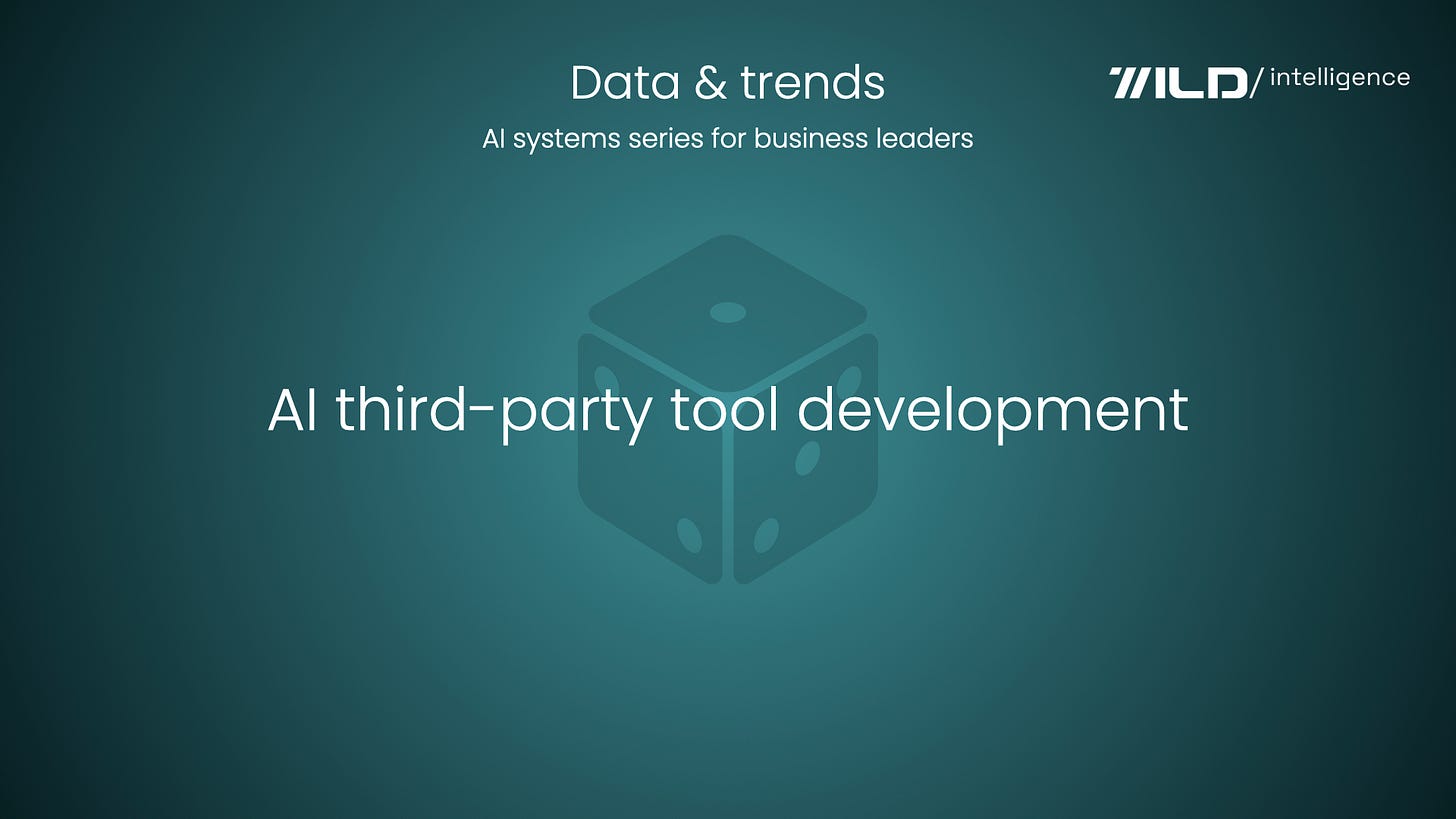🎲 AI third-party tool development
AI data and trends for business leaders | AI systems series
Hello,
Small reminder: this is the third post of a new series in the data and trends section.
The new series presents another angle, slightly different from the previous series that seeded the TOP framework1 and serves as the building block of our vision of AI safety implementation.
In this new series, we focus on more advanced topics in subsequent weeks, where we'll delve deeper into specific measurement methodologies and implementation strategies.
I believe this series will contribute significantly to the ongoing development of robust AI safety practices.—Yael.
Previous posts from the series:
Third-party tool development for AI safety measurement
Developing robust AI safety measurement tools necessitates a collaborative ecosystem, often involving third-party developers.
Enabling external access through well-designed APIs and secure protocols fosters innovation and allows for diverse perspectives in addressing AI safety challenges.
API design for measurement tools:
APIs for AI safety measurement tools should prioritize:
Standardization: Adherence to established standards (e.g., RESTful APIs, OpenAPI specifications) ensures interoperability and ease of integration.
Granularity: APIs should offer granular access to specific measurement metrics and data, allowing developers to build tailored tools.
Versioning: Implementing API versioning enables backward compatibility and facilitates smooth updates.
Rate Limiting: Implementing rate limiting is essential to prevent abuse and ensure fair resource allocation.
Security considerations for third-party access:
Security is paramount when providing third-party access to AI safety measurement tools. Key considerations include:
Authentication and authorization: Robust authentication mechanisms (e.g., OAuth 2.0) and fine-grained authorization controls are crucial for securing access.
Data encryption: Encrypting data in transit and at rest protects sensitive information.
Regular security audits: Regular security audits and penetration testing helps to identify and address vulnerabilities.
Input validation: Thorough input validation prevents malicious code injection and other security risks.
Documentation and usage guidelines:
Comprehensive documentation and clear usage guidelines are essential for facilitating third-party tool development. This includes:
API Reference: Detailed documentation of API endpoints, parameters, and response formats.
Code Examples: Providing code examples in multiple programming languages simplifies integration.
Usage Guides: Offering step-by-step instructions and best practices for using the API.
Support Channels: Establishing clear support channels (e.g., forums, email) for addressing developer questions.
Implementation of access controls:
Implementing robust access controls ensures that third-party developers have appropriate permissions and that data is protected. This involves:
Role-Based Access Control (RBAC): Assigning roles and permissions based on developer needs.
API Keys: Generating and managing API keys for secure authentication.
Scoped Access: Limiting access to specific data or functionalities based on developer requirements.
Examples of successful third-party measurement tools:
A successful example can be seen in the development of tools around the Perspective API from Google. This API, which provides toxicity scores for text, has enabled third-party developers to create a wide range of applications, including:
Comment moderation tools for online forums.
Filtering systems for social media platforms.
Analysis tools for studying online discourse.
The Perspective API's success is attributed to its well-documented API, clear usage guidelines, and robust security measures. This example illustrates the potential for third-party tool development to enhance AI safety measurement and promote responsible AI practices.
To address this, business leaders must consider:
How are you ensuring that third-party tools integrated into your AI safety measurement framework adhere to your organization's security and ethical standards, particularly regarding data privacy and responsible AI practices?
What strategies are you implementing to foster a collaborative ecosystem with third-party developers, encouraging innovation and the development of diverse measurement tools while maintaining control over data access and API usage?






